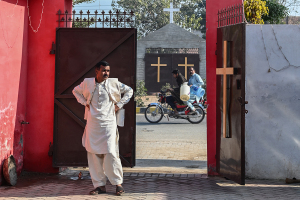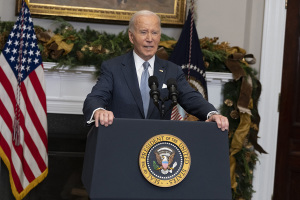People Migration to Larger Churches
One of the most significant trends in American churches the past 25 years has been the migration of people from smaller churches to larger churches. We will be providing more information in the future about this movement. The implications are significant and should not be ignored.
In my own denomination of some 46,000 churches and 16 million members, the concentration of people to larger churches is a clear and present reality. Look at some of these statistics that give evidence to this phenomenon.
- Less than one-half of one percent of these churches report an average worship attendance of 2,000 or more, but 12.6% of the total attendance of the denomination is now concentrated in these relatively few churches.
- Only 1.5% of all these churches have an attendance of 1,000 or more, but 22.2% of the total denominational attendance is in these congregations.
- Only 4.4% of the churches have an attendance of 500 or more, but 35.3% of the attendance of 46,000 churches is concentrated in just those few churches.
We expect to see continued migration of people from smaller to larger churches, and that the concentration of these members in larger churches will be even more pronounced with each progressive year.
The first obvious question is "Why?" Why are people in increasing numbers stating a clear preference for larger churches? At this point most of our evidence is anecdotal, but we believe we can offer some reasons that will likely supported by more objective future research.
- The migration of the U.S. population to cities and other areas of greater population. In 1900, according to the U.S. Census Bureau, 60% of U.S. residents lived in a rural area. In 2010, only 16% of the residents lived in rural areas. And the 84% of the population that lives in urban and suburban areas are concentrated in only 10% of the total U.S. land. That significant concentration of people lends itself to a higher probability of the development of larger churches.
- The smaller church is not as likely to be the hub of the community as it once was. Not too many years ago, the social, religious, and recreational life of smaller communities would revolve around churches in the area. That is no longer the case in many smaller churches.
- The multi-campus church model is opening the door for even larger churches. Church size is thus no longer constrained to one location on limited acreage. Today we have about 70 churches in the U.S. that have an average weekly worship attendance of 10,000 or more. Just a few years ago, it was rare to see churches reach 2,000 in attendance. More and more people are moving to larger and larger churches with multiple locations.
- The church attendee is demanding quality that many small churches cannot afford. Just yesterday I spoke to a young couple who transferred from their small church to a much larger church in the area. They were the first members of their family to leave their smaller church in four generations. Their reason for doing so was straightforward. As new parents, they wanted to be in a church that had the most secure and advanced preschool for their daughter. Their smaller church was simply not able to offer what the larger church offered.
- The larger church tends to attract leaders with they type of communication and leadership skills that in turn attracts more people. Indeed many of these larger churches have leaders with personalities and platforms that extend well beyond the churches they serve.
I have been careful not to assess a qualitative judgment about this migration trend. I love the smaller church, and I grieve as many are closing, and others are barely making it. And I have no doubt there are many incredible and effective small churches in the United States today.
My purpose in this brief article has been to define the reality of what is taking place in American congregations. We need to understand this reality so we can understand the context in which God has placed us.
There are so many unanswered questions about this trend. Is this migration positive, negative, or neutral for American congregations? What are the implications for the future? Will the trend continue and, as a result, even more of the smaller congregations close their doors? What are implications for the training of pastors and other leaders who will go to either larger or the smaller churches? What are the implications for the future of denominations and similar bodies?
This issue is one of pressing importance. It cannot be ignored. These and so many other unanswered questions must be answered in the near future.





























